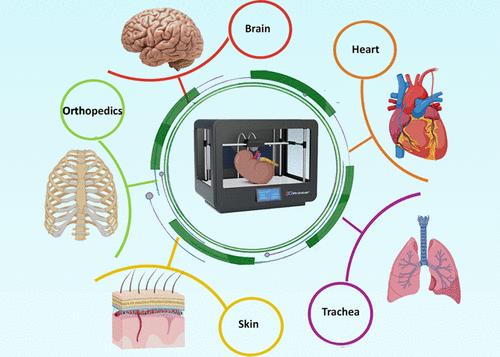当前位置:
X-MOL 学术
›
J. Med. Chem.
›
论文详情
Our official English website, www.x-mol.net, welcomes your
feedback! (Note: you will need to create a separate account there.)
4D-Printed Dynamic Materials in Biomedical Applications: Chemistry, Challenges, and Their Future Perspectives in the Clinical Sector.
Journal of Medicinal Chemistry ( IF 6.8 ) Pub Date : 2020-04-07 , DOI: 10.1021/acs.jmedchem.9b02115 Wenxian Zhou 1 , Zhiguang Qiao 2, 3 , Ehsan Nazarzadeh Zare 4 , Jinfeng Huang 1 , Xuanqi Zheng 1 , Xiaolei Sun 5 , Minmin Shao 6 , Hui Wang 1 , Xiaoyan Wang 7 , Dong Chen 1 , Jing Zheng 8 , Shan Fang 9 , Yan Michael Li 10 , Xiaolei Zhang 1 , Lei Yang 1 , Pooyan Makvandi 11, 12, 13 , Aimin Wu 1
Journal of Medicinal Chemistry ( IF 6.8 ) Pub Date : 2020-04-07 , DOI: 10.1021/acs.jmedchem.9b02115 Wenxian Zhou 1 , Zhiguang Qiao 2, 3 , Ehsan Nazarzadeh Zare 4 , Jinfeng Huang 1 , Xuanqi Zheng 1 , Xiaolei Sun 5 , Minmin Shao 6 , Hui Wang 1 , Xiaoyan Wang 7 , Dong Chen 1 , Jing Zheng 8 , Shan Fang 9 , Yan Michael Li 10 , Xiaolei Zhang 1 , Lei Yang 1 , Pooyan Makvandi 11, 12, 13 , Aimin Wu 1
Affiliation

|
Most of the biomedical materials printed using 3D bioprinting are static and are unable to alter/transform with dynamic changes in the internal environment of the body. The emergence of four-dimensional (4D) printing addresses this problem. By preprogramming dynamic polymer materials and their nanocomposites, 4D printing is able to produce the desired shapes or transform functions under specific conditions or stimuli to better adapt to the surrounding environment. In this review, the current and potential applications of 4D-printed materials are introduced in different aspects of the biomedical field, e.g., tissue engineering, drug delivery, and sensors. In addition, the existing limitations and possible solutions are discussed. Finally, the current limitations of 4D-printed materials along with their future perspective are presented to provide a basis for future research.
中文翻译:

生物医学应用中的4D打印动态材料:化学,挑战及其在临床领域中的未来前景。
使用3D生物打印技术打印的大多数生物医学材料都是静态的,无法随着人体内部环境的动态变化而改变/变换。二维(4D)打印的出现解决了这个问题。通过对动态聚合物材料及其纳米复合材料进行预编程,4D打印能够在特定条件或刺激下产生所需的形状或转换功能,以更好地适应周围环境。在这篇综述中,在生物医学领域的不同方面介绍了4D打印材料的当前和潜在应用,例如组织工程,药物输送和传感器。此外,还讨论了现有限制和可能的解决方案。最后,
更新日期:2020-04-07
中文翻译:

生物医学应用中的4D打印动态材料:化学,挑战及其在临床领域中的未来前景。
使用3D生物打印技术打印的大多数生物医学材料都是静态的,无法随着人体内部环境的动态变化而改变/变换。二维(4D)打印的出现解决了这个问题。通过对动态聚合物材料及其纳米复合材料进行预编程,4D打印能够在特定条件或刺激下产生所需的形状或转换功能,以更好地适应周围环境。在这篇综述中,在生物医学领域的不同方面介绍了4D打印材料的当前和潜在应用,例如组织工程,药物输送和传感器。此外,还讨论了现有限制和可能的解决方案。最后,













































 京公网安备 11010802027423号
京公网安备 11010802027423号